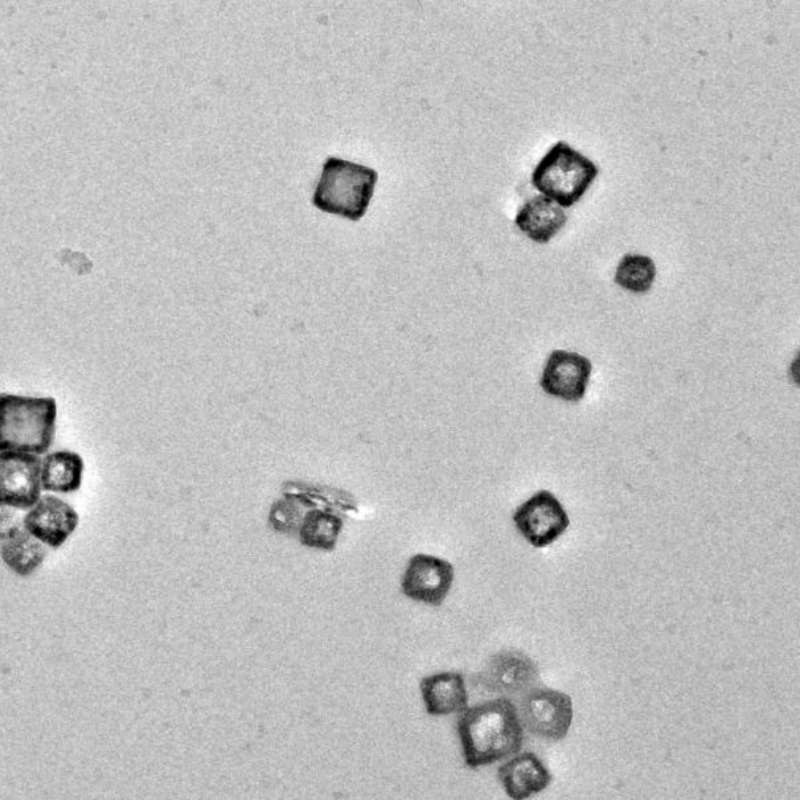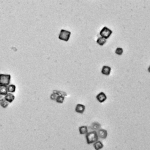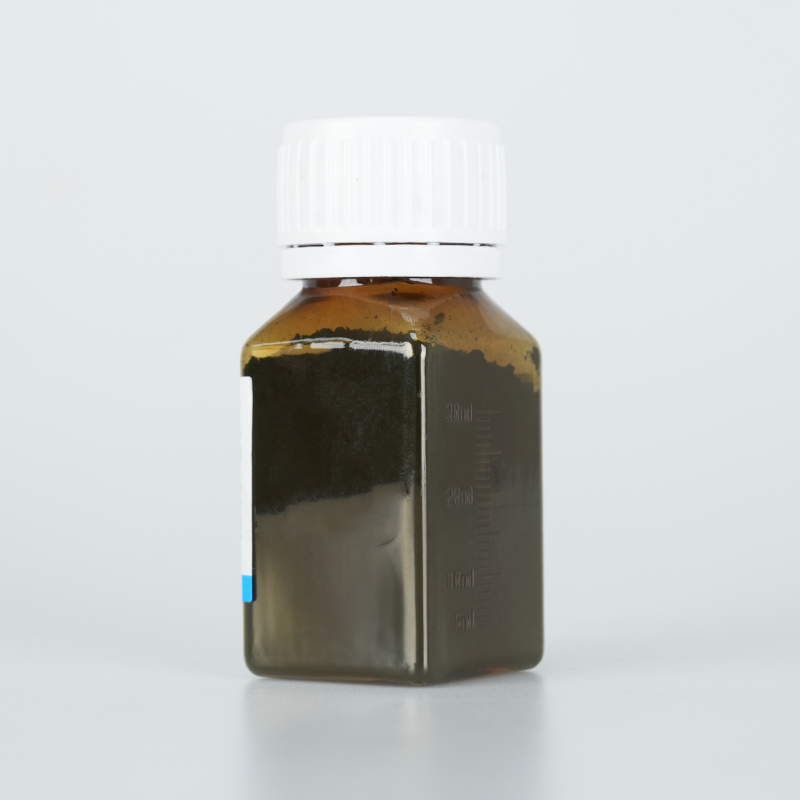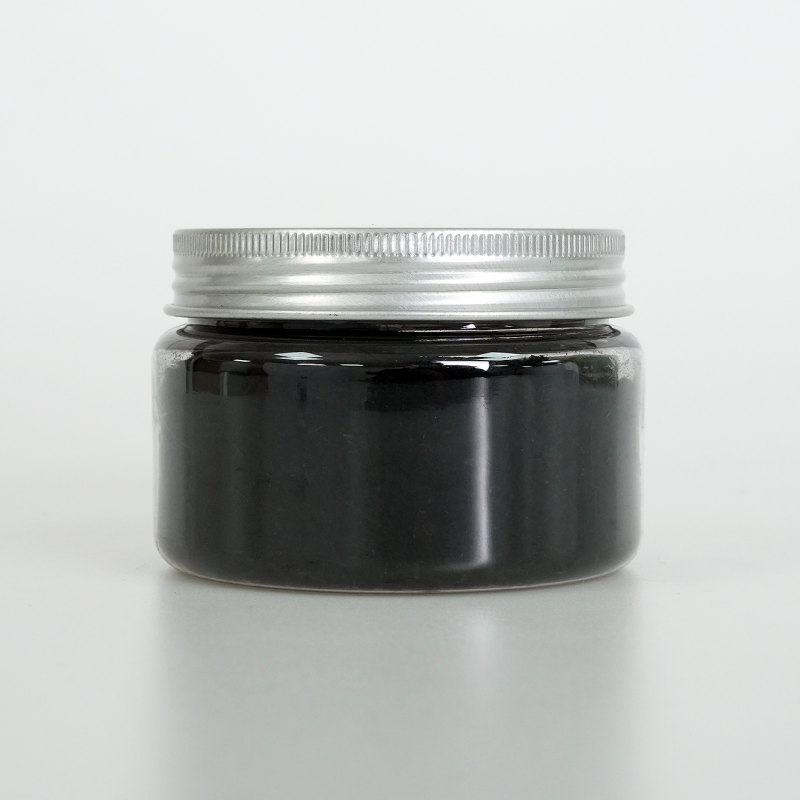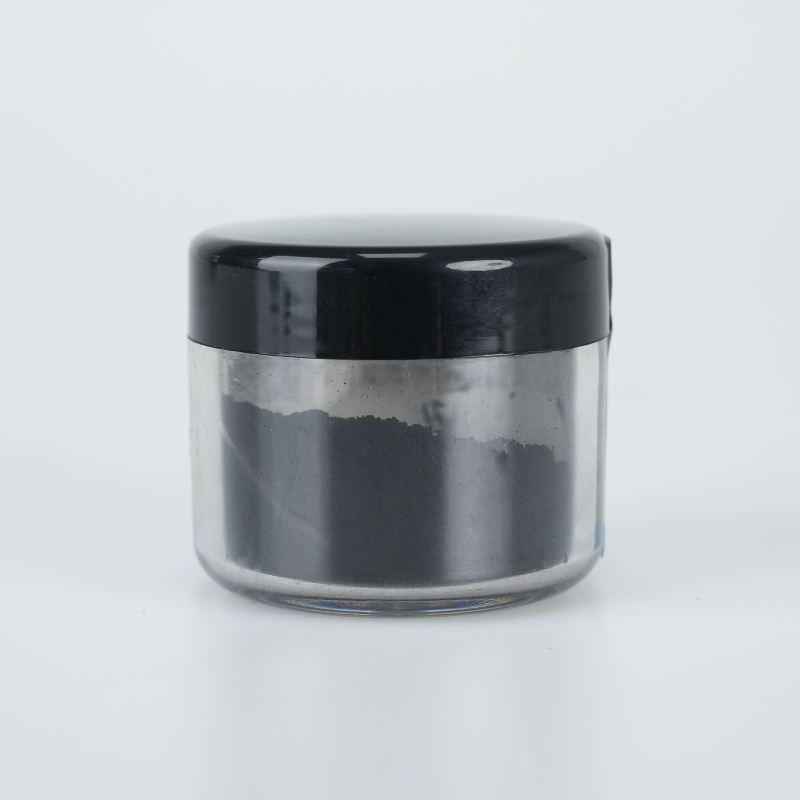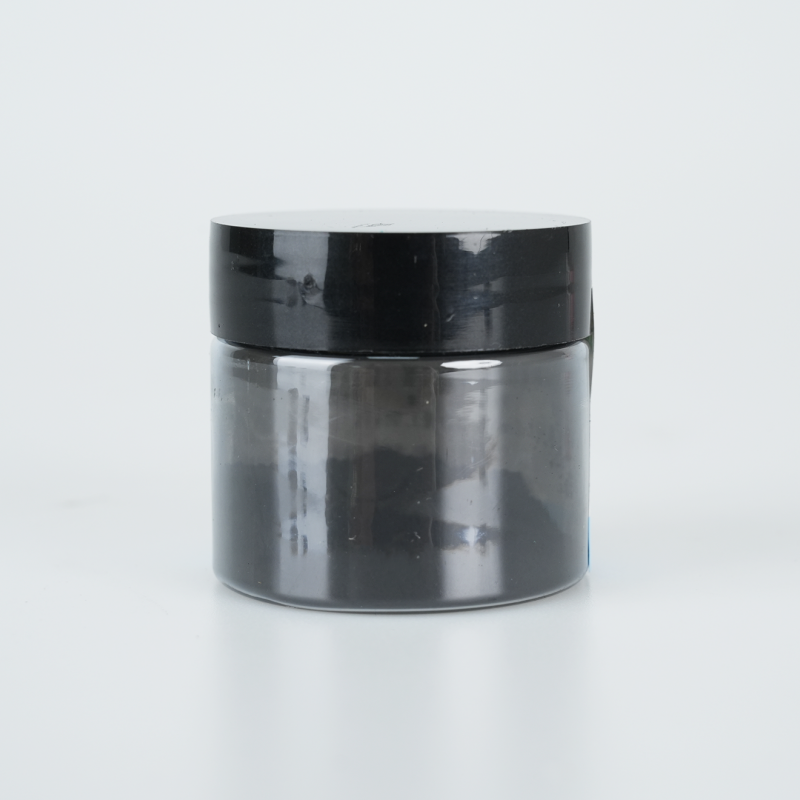Hollow Prussian Blue nanoparticles provide optimized electrochemical performance, superior ion exchange efficiency, and enhanced stability. Designed for biomedical and environmental applications, they ensure effective pollutant adsorption, extended durability, and high adaptability.
Product Overview
Hollow Prussian Blue Nanoparticles are a unique nanomaterial derived from Prussian Blue (PB), prepared using hydrochloric acid etching to form a hollow mesoporous structure. This distinctive hollow structure provides a large surface area and pore volume, making it ideal as a drug carrier, thus enhancing therapeutic efficacy. Prussian Blue itself has detoxification properties and biocompatibility, and after structural modification, it finds extensive applications in drug delivery, photothermal therapy, and nanocatalytic therapies.
Key Features
- Good Dispersion: The use of PVP as a raw material ensures that the Prussian Blue nanoparticles exhibit excellent water solubility and dispersion, maintaining stability in various solvents.
- Excellent Drug Loading Capacity: The hollow mesoporous structure provides a larger surface area and pore volume, allowing efficient loading of drugs and small molecules, which is highly beneficial for biomedical applications.
- Multiple Nanocatalytic Activities: The nanoparticles possess various enzymatic activities, including peroxidase (POD), superoxide dismutase (SOD), and catalase (CAT), enabling them to decompose hydrogen peroxide, scavenge free radicals, and promote tumor treatment while alleviating oxidative stress.
- Outstanding Photothermal Conversion Efficiency: With the ability to absorb light at 808 nm, these nanoparticles effectively convert light energy into heat, generating heat that aids in tumor ablation and enhancing the activity of the nanocatalysts.
Applications
- Drug Loading and Targeted Delivery: The unique hollow mesoporous structure allows for efficient drug loading, and surface modifications enable targeted delivery, thereby improving therapeutic effects and minimizing side effects.
- Photothermal Therapy: Due to their special crystal structure, Prussian Blue nanoparticles absorb near-infrared light and are widely used in tumor photothermal ablation therapy.
- Nanocatalytic Therapy: With multiple enzymatic activities, the nanoparticles can clear free radicals, alleviate oxidative stress and inflammation, and improve the tumor microenvironment.
- Biomedical Imaging: These nanoparticles exhibit good magnetic resonance imaging (MRI) and photoacoustic imaging (PA) properties. When combined with their hollow structure and surface modifications, they can be used in multimodal biomedical imaging to aid in disease diagnosis.
| Item | Parameter |
| Diameter | 70-150 nm |
| Solvent | Water |
| Appearance | Blue liquid |
| Concentration | 1 mg/mL |
| Remark | Surface can be modified with carboxyl group, please consult for details |
 new material
new material

